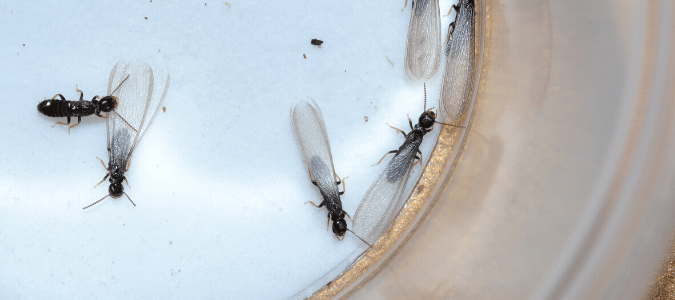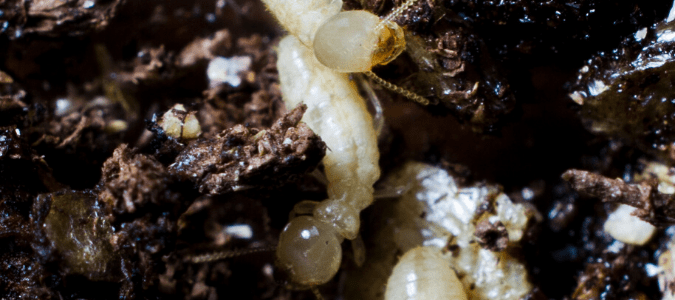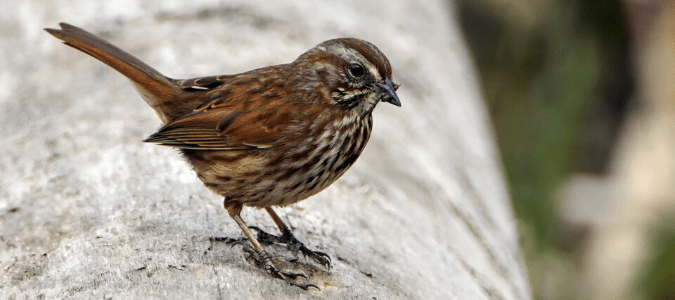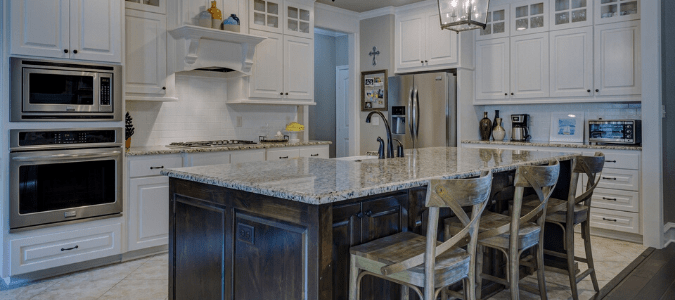
Maybe you spotted some strange, tiny holes in your drywall or baseboards, close to where the wall meets the floor. Or perhaps you knocked on the wall on a spot you thought was solid, and oddly enough, it sounded hollow. Each of these signs could be an indication that you could have termites living—and feeding—inside your walls. However, these aren’t the only signs.
If you wonder if you might have termites, take a closer look around to see if you can spot any of the following:
- Faint lines on drywall along areas where termites are tunneling
- Wood that seems hollow when you tap on it with a screwdriver
- Bubbling or peeling paint
- Small pinholes where termites have eaten through your drywall
- Baseboards that crumble under slight pressure
- Jammed windows or doors
- Buckling wood
- Discolored drywall
While there are visible clues of termite activity, keep in mind that the subterranean variety, the type that is responsible for a reported $1.5 billion in damages to U.S. homes each year, are notoriously hard to detect. These creatures live largely underground or protected by tube-shaped passageways that provide the moisture these creatures need to survive. In most cases, these destructive pests are not discovered until extensive damage has already taken place.
For these reasons, the best way to determine whether you have termites in your walls or anywhere on your property is to schedule a termite inspection by a trusted pest control company. A licensed and trained professional can conduct a thorough inspection, determine whether you have termites or some other unwanted pest and recommend the best steps for resolving the problem as quickly and thoroughly as possible. Given the potential for damage to your biggest investment, the advantages of enlisting an expert far outweigh any negatives.
Let’s take a look at some other common signs that you might have termites around the home, so you are armed with a solid foundation of information to determine your best next steps if you suspect you may have a problem.

Common Signs Of A Termite Nest In A House
For most people who have a termite nest in or around their house, as we have already mentioned, there is often no indication of the presence of a colony until the termites have already done extensive damage. This is because subterranean termites—the most common type found in the U.S. and the variety that causes the most damage to American homes every year—build their nests underground, out of sight. Worker termites build mud tubes between the nest and your home, which is their food source, in order to stay protected from sunlight and predators. These destructive pests feed on wood that is hidden away within walls or interior crawl spaces, tunneling into it and consuming the cellulose, weakening its structure over time.
Drywood termites require less moisture than subterranean termites to live. These termites typically build their colonies in the rafters and eaves of attics, garages and other wooden spaces, and can also be hard for homeowners to detect on their own.
Professional exterminators know exactly what to look for to find a termite nest, whether of the subterranean or drywood variety, which is why having regular inspections performed by a pest control specialist can be particularly helpful in preventing termite infestations and damage to your property. While termite activity often occurs close to a nest, these colonies are often hidden out of sight from the average homeowner. Therefore, the same signals of termite activity apply, including:
- Small piles of wings found near windows, doors or light fixtures. Often spotted in spring or early summer and after a rain, these may have been shed by swarming termites that exited the colony in order to reproduce and form new colonies.
- Swarmer termites flying or crawling near a window, exterior door or light fixture in or around your home. Swarmers look like large ants with wings, with black bodies that are roughly a quarter-inch in length and wings that may extend past their bodies.
- A very quiet, fast-paced rattling or tapping noise coming from inside a wall, windowsill or other area, often in response to being knocked on from the outside. This could be the sound of soldier termites pounding their heads rapidly against the nearest surface, an instinctive behavior triggered when they are disturbed or threatened.
- Wood that sounds hollow instead of solid when you tap on it. This could indicate that termites have eaten through the wood’s interior, weakening its structure.
- Tiny holes in drywall or baseboards. These can indicate that termites have tunneled all the way through from the interior part of the wall.
- Peeling paint or buckling floorboards. These can look similar to water damage, but might actually be due to the presence of termites.
- Wood that is crumbling or has tunnel patterns in it. This can indicate extensive termite damage.
- Mud tubes, likely around the foundation of your home, that subterranean termites use to stay moist while gaining access to the wood that makes up your home.
Once again, it’s important to note that swarmer termites, or even just their wings, are likely to be the only sign of termites a homeowner will ever spot outside the colony. The soldier and worker termites live out their entire lives inside the colony and in the mud tubes connecting the colony to its food source, hidden from view.
Now that we have talked about the entire colony, you might have more questions about the termite life cycle. What do baby termites look like? Or, because termites are insects, do these creatures spin cocoons?

Is There Such A Thing As A Termite Cocoon?
Termites don’t make cocoons. Cocoons are small pods or coverings made of silky threads that some insects create in order to protect themselves during certain transformative stages of their life cycles. If you spot a cocoon, it doesn’t indicate the presence of termites. Cocoons may point to the presence of caterpillars, fleas, moths and some pantry pests.
Subterranean termites do create mud tubes, which some people might see and confuse with a cocoon. If you see what looks like a tube made out of dirt that is about pencil-width and is attached to the exterior foundation of your home or garage, it might be a sign of termite activity. If you spot one of these passageways, it’s a good idea to get it checked out by a licensed and trained termite control specialist.
Homeowners who prefer natural methods of pest control may wonder if any predators could assist with managing termites on their property.

Natural Termite Predators
Termites have a variety of predators in their natural environment, including:
- Birds. Many different types of birds feed on termites when they spot swarmers seeking out a spot to create a new colony.
- Ants. There are several types of ants that are known to prey on termites.
- Spiders. Spiders can catch swarmer termites in their webs and feed on them.
- Lizards, frogs and snakes. Various types of reptiles and amphibians feed on termites when the opportunity arises.
- Bats, moles and anteaters. Many types of mammals and marsupials—and even humans in some areas of the world—consume termites for sustenance.
Many people wonder about termite predators because they want to know whether there is some type of beneficial animal or insect that could help prevent a termite infestation on their property. Unfortunately, some termite predators are also considered pests that would be undesirable to have around your home or property. Furthermore, subterranean termite colonies can number in the hundreds of thousands or even a million, and while drywood termite colonies are smaller, they can still number in the thousands. Birds, ants, lizards and other animals can’t be expected to consume enough termites to prevent an infestation, nor to be effective in managing an unground termite population, which means this type of biocontrol is not an effective form of pest control.
If you’re still hesitant to contact a pest control specialist, your next thought might be to purchasing a termite control product at your local home improvement store.

Is A Termite Bomb An Effective Solution?
If you’re thinking of using a termite bomb, or termite fogger, to try to deal with a termite infestation on your own, here are some things you should know. First, there really aren’t insect fogger products available specifically to target termites, which should tell you something. Most insect fogger or “bomb” products that are available are intended to kill ants, cockroaches and other common household insect pests. Therefore, these products aren’t likely to be effective at targeting termites.
Furthermore, insect foggers are designed to be set in a room and activated, which means they spray insecticide into a room. Since the most destructive types of termites live in underground colonies or in nests located in attics, crawl spaces and other remote areas, insect foggers generally can’t reach them where they live, rendering these products largely ineffective. If you’ve spotted swarmer termites out in the open in your home, a termite bomb or insect fogger product can certainly kill those termites, preventing them from going on to establish new colonies. The problem is, the presence of swarmers indicates the presence of an established colony somewhere nearby, and that colony won’t be affected by the termite bomb.
Professional termite exterminators have products and strategies that are far more effective at eliminating existing colonies and preventing new ones from forming. Knowledgeable technicians can also make recommendations regarding any needed repairs for areas of your home that might have been damaged by termite activity.
ABC Has Effective Termite Solutions
If you have noticed any signs of termite activity on your property, or if you have spotted and wanted to get rid of termite swarmers, it’s important to contact a certified pest control professional. ABC Home & Commercial Services has provided termite control to homeowners across Texas and Florida for over 70 years. Our skilled technicians know exactly where to find these destructive pests and have proven methods to eliminate the entire colony. If you believe you have a termite problem, don’t hesitate to reach out.